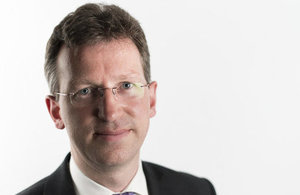Legally Bland
Well-Known Member
- Joined
- Nov 17, 2015
- Messages
- 8,776
- Reaction score
- 43,254
Might have to be careful on this one.
__________________
Press release
Media advisory notice - Hillsborough proceedings
The Attorney General Jeremy Wright QC MP wishes to draw attention to the requirement not to publish material, including online, which could jeopardise the defendants’ right to a fair trial
Published 29 June 2018
From:
Attorney General's Office and The Rt Hon Jeremy Wright MP

Attorney General Jeremy Wright QC MP
Criminal proceedings against six individuals arising out of the investigations into the tragic events at Hillsborough on the 15th of April 1989 and its aftermath are currently active. The first of three criminal trials is due to start in 10 weeks’ time.
The Attorney General Jeremy Wright QC MP wishes to draw attention to the requirement not to publish material, including online, which could create a substantial risk that the course of justice in these proceedings may be seriously impeded or prejudiced, thereby jeopardising the defendants’ right to a fair trial.
In particular, the Attorney General draws attention to the requirement not to publish material that asserts or assumes, expressly or implicitly, the guilt of any of those who face trial, whether in relation to the events of the 15th of April 1989 or to subsequent events. That is an issue to be determined solely by the three juries on the evidence that they hear in court.
The risks may also arise by commentary which prejudges issues that witnesses may give evidence about or which asserts or assumes wrongdoing on the part of organisations by whom the defendants were employed.
The Attorney General’s Office will be monitoring the coverage of these proceedings.
Editors, publishers and social media users should take legal advice to ensure they are in a position to fully comply with the obligations they are subject to under the Contempt of Court Act.
They are also reminded of the terms of the order made under section 4(2) of the Contempt of Court Act 1981 by Sir Peter Openshaw DL on 29th June 2018.
Media advisory notice - Hillsborough proceedings
__________________
Press release
Media advisory notice - Hillsborough proceedings
The Attorney General Jeremy Wright QC MP wishes to draw attention to the requirement not to publish material, including online, which could jeopardise the defendants’ right to a fair trial
Published 29 June 2018
From:
Attorney General's Office and The Rt Hon Jeremy Wright MP

Attorney General Jeremy Wright QC MP
Criminal proceedings against six individuals arising out of the investigations into the tragic events at Hillsborough on the 15th of April 1989 and its aftermath are currently active. The first of three criminal trials is due to start in 10 weeks’ time.
The Attorney General Jeremy Wright QC MP wishes to draw attention to the requirement not to publish material, including online, which could create a substantial risk that the course of justice in these proceedings may be seriously impeded or prejudiced, thereby jeopardising the defendants’ right to a fair trial.
In particular, the Attorney General draws attention to the requirement not to publish material that asserts or assumes, expressly or implicitly, the guilt of any of those who face trial, whether in relation to the events of the 15th of April 1989 or to subsequent events. That is an issue to be determined solely by the three juries on the evidence that they hear in court.
The risks may also arise by commentary which prejudges issues that witnesses may give evidence about or which asserts or assumes wrongdoing on the part of organisations by whom the defendants were employed.
The Attorney General’s Office will be monitoring the coverage of these proceedings.
Editors, publishers and social media users should take legal advice to ensure they are in a position to fully comply with the obligations they are subject to under the Contempt of Court Act.
They are also reminded of the terms of the order made under section 4(2) of the Contempt of Court Act 1981 by Sir Peter Openshaw DL on 29th June 2018.
Media advisory notice - Hillsborough proceedings
Last edited:
